| Author |
Message |
    
jb_castagnos
Senior Member
Username: jb_castagnos
Post Number: 1429
Registered: 07-2002

| | Posted on Sunday, August 04, 2019 - 09:36 pm: | 




|
I have a Pierce inverted twin, it came with the wrong carburetor, aluminum pistons, spark plugs and a Model T timer. I now have cast iron pistons, piston trip ignitors and battery savers in place of the timer. I can account for 8 of these twins, none has the original carburetor. The singles used a surface carburetor, the early twins have the same double inlet valve cage. The only ad I've seen shows two sets of intake plumbing, I'm fairly certain this was for the surface carburetor system. Reading about surface carburetors it says that nearly all carburetors before 1902 were of the surface evaporation type, a spray carburetor was rarely seen. By 1904 the surface carburetor was obsolete. The Schebler carbs have a 1902 pat date, supporting this. My friend Jim has a single and has rI have a Pierce inverted twin, it came with the wrong carburetor, aluminum pistons, spark plugs and a Model T timer. I now have cast iron pistons, piston trip ignitors and battery savers in place of the timer. I can account for 8 of these twins, none has the original carburetor. The singles used a surface carburetor, the early twins have the same double inlet valve cage. The only ad I've seen shows two sets of intake plumbing, I'm fairly certain this was for the surface carburetor system. Reading about surface carburetors it says that nearly all carburetors before 1902 were of the surface evaporation type, a spray carburetor was rarely seen. By 1904 the surface carburetor was obsolete. The Schebler carbs have a 1902 pat date, supporting this. My friend Jim has a single and made an excellent pattern for the carburetor, a large cast iron box, he had one cast for me. I have the engine plumbed with the two mixture valves, working on the carb now. I hope to have it running at Portland.
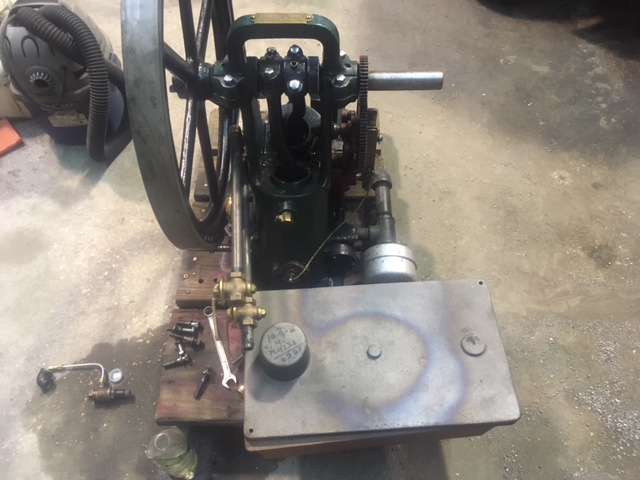
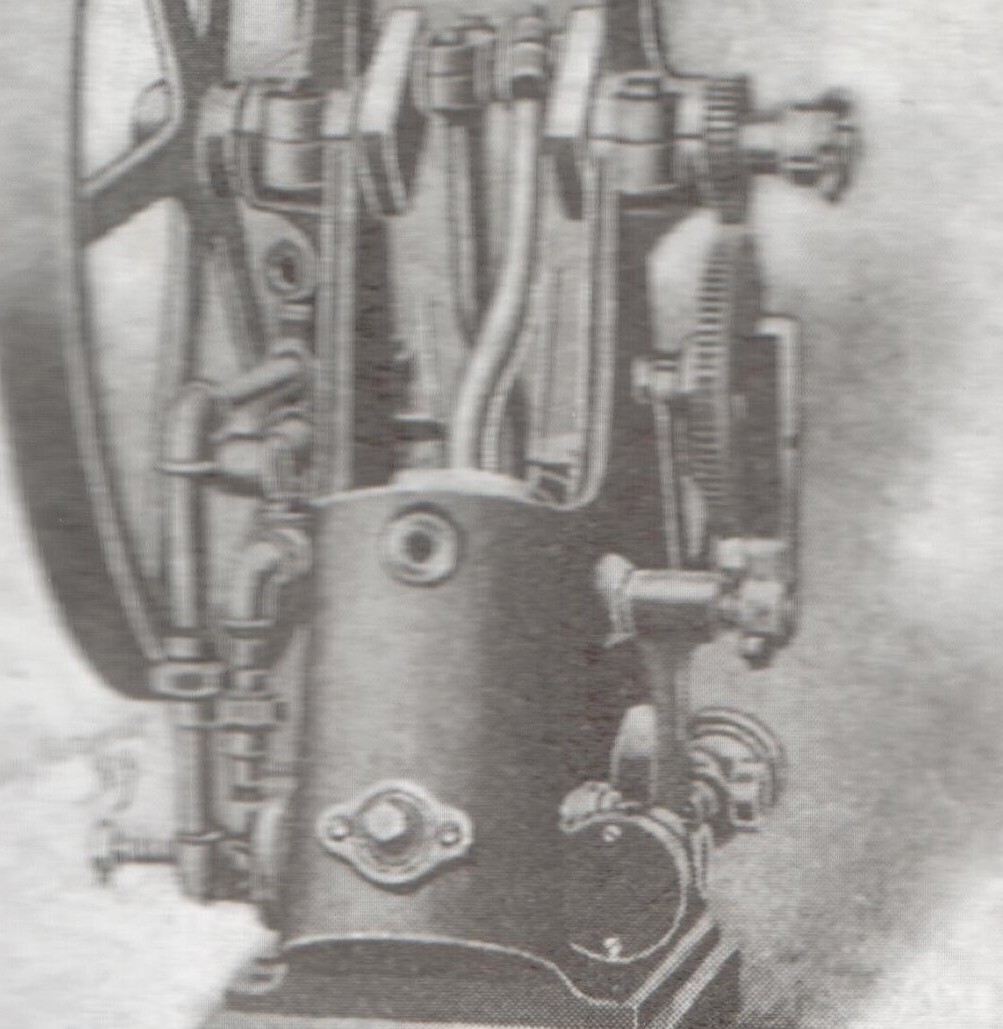 |
    
ernie
Senior Member
Username: ernie
Post Number: 2544
Registered: 01-2002

| | Posted on Monday, August 05, 2019 - 07:10 am: | 




|
Neat stuff! |
    
miro
Senior Member
Username: miro
Post Number: 1057
Registered: 11-2001

| | Posted on Sunday, August 11, 2019 - 08:57 am: | 




|
From what I've read, the surface carbs worked with fuel that was much more volatile than the gasoline of today. It was more like the camp fuel naptha fuel. I recently saw a small model engine ( 3/4 bore, 1 in stroke) working with a surface carb that was about 3 inches in diameter ( approx 30 sq in surface) . It used 1/4 in tube between the carb and the engine.
It will be interesting to see how it works with a much bigger engine. In a boat I suspect the fuel sloshing around in the box helps vapourize it. |
    
bruce
Senior Member
Username: bruce
Post Number: 682
Registered: 07-2002
| | Posted on Sunday, August 11, 2019 - 02:35 pm: | 




|
Gardner Hiscox Gas, Gasolene, and oil Engines chapterIX has a 4 or 5 page discussion on surface carburetors. Illustration shows use in stationary engine application.
not sure I'd want to apply it in a boat operation-no room to run |
    
jb_castagnos
Senior Member
Username: jb_castagnos
Post Number: 1430
Registered: 07-2002

| | Posted on Sunday, August 11, 2019 - 08:41 pm: | 




|
Looking for info on surface carbs the first article I read was about using them on motorcycles, the California and Minerva bikes used them. I can only imagine they set the engines to a fixed speed and started riding, it would be hard to adjust two valves for speed and mixture while trying to operate a bike. |
    
richarddurgee
Senior Member
Username: richarddurgee
Post Number: 4144
Registered: 11-2001
| | Posted on Monday, August 12, 2019 - 09:03 pm: | 




|
*
First 9 pages in 1906 Gardner Hiscox Gas, Gasolene, and oil Engines chapter IX
1.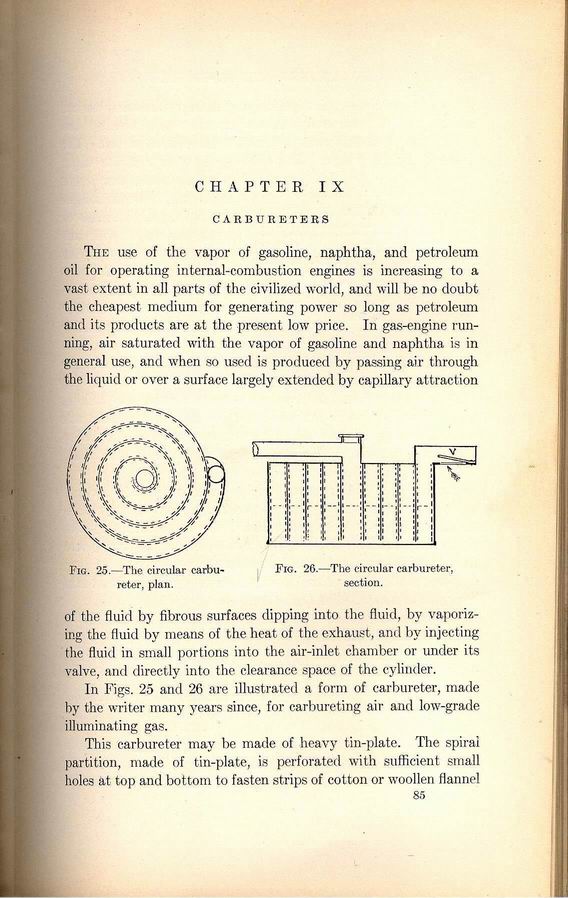
2.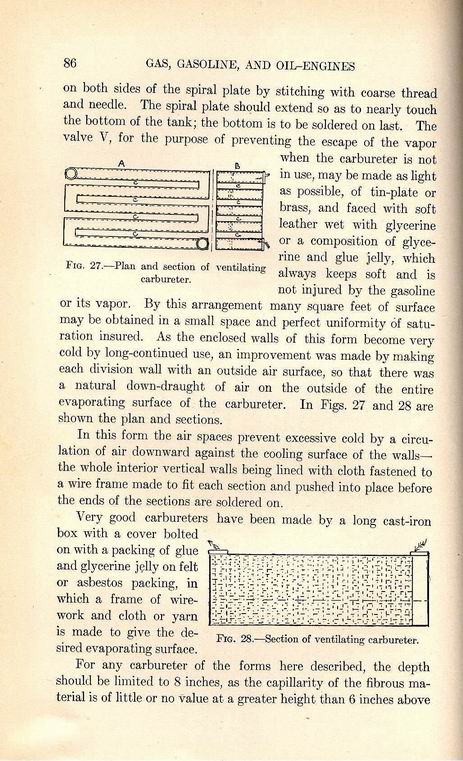
3.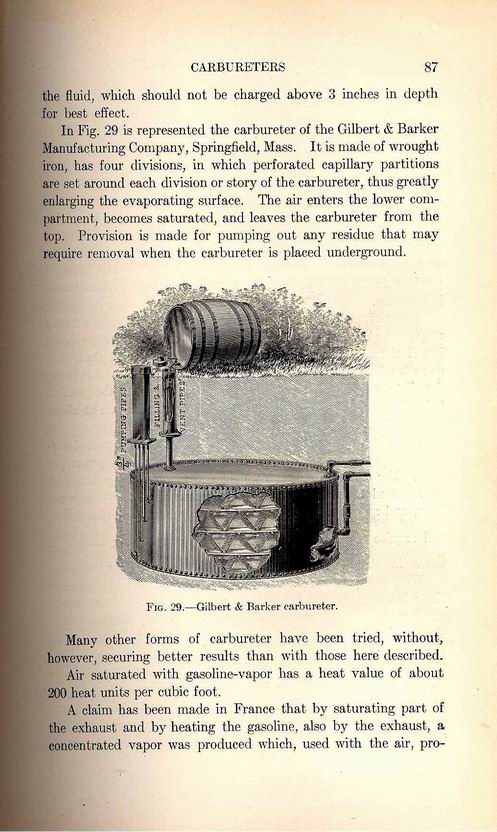
4.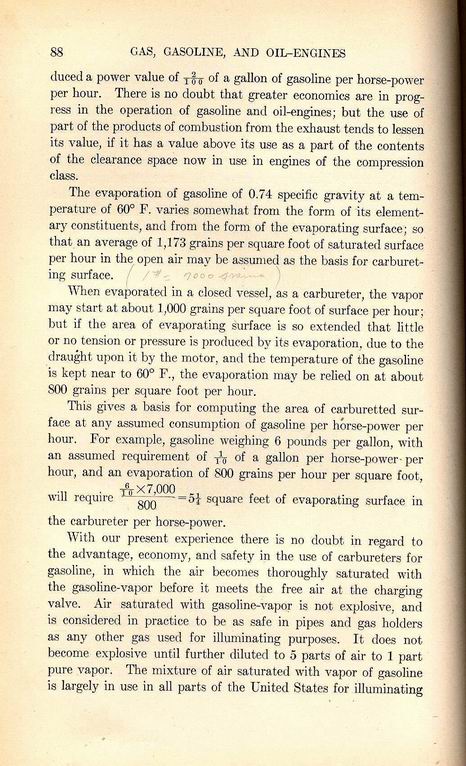
5.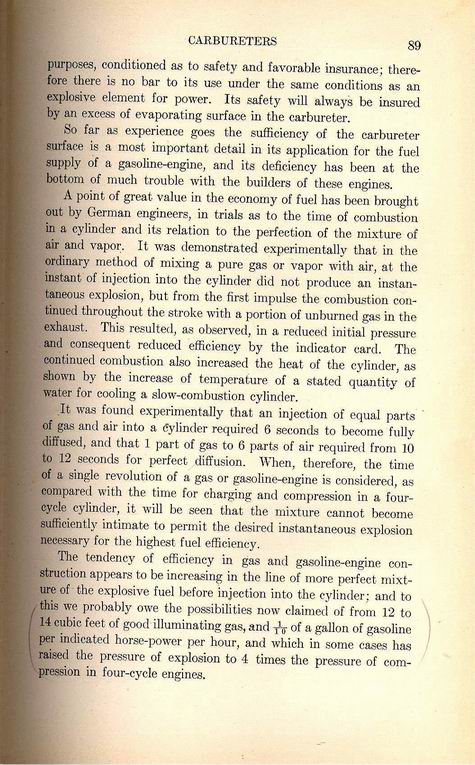
6.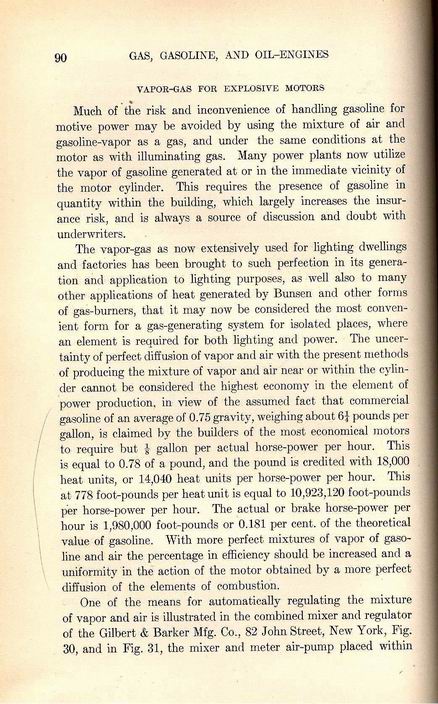
7.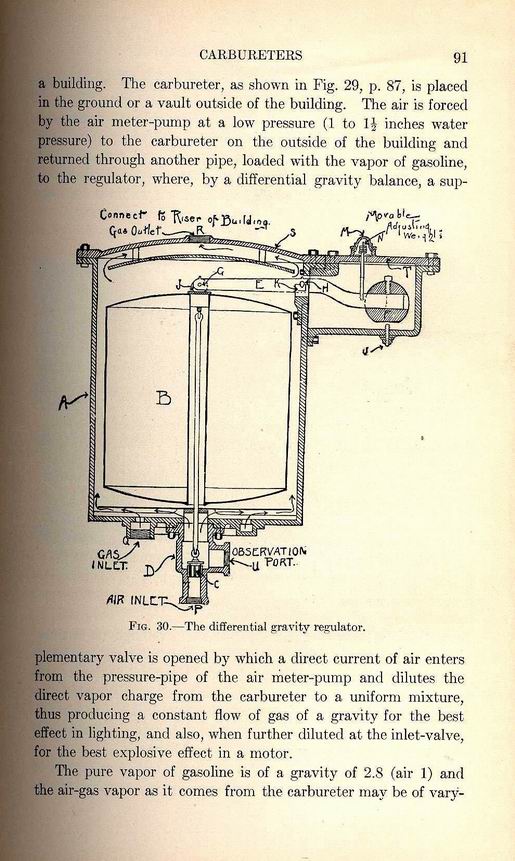
8.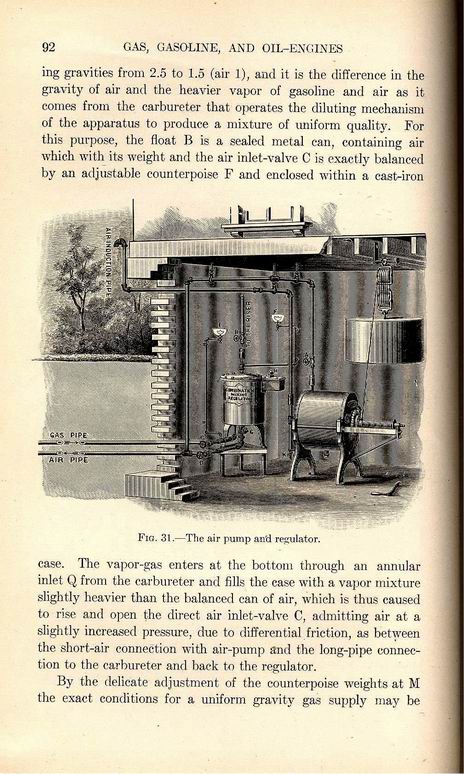
9.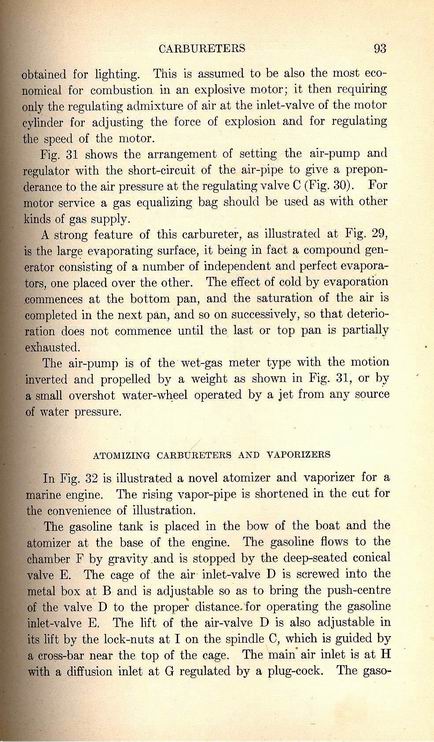
Don't know if these pages are useful or not !
* |
    
jb_castagnos
Senior Member
Username: jb_castagnos
Post Number: 1431
Registered: 07-2002

| | Posted on Monday, August 12, 2019 - 10:31 pm: | 




|
Good information Richard, thanks for posting it. It took quite a while to figure out the atomizing carburetor. The Springfield farm engine had fuel injection in 1895, it was said to be one of the frst engines to successfully run on liquid fuel.
I got the plumbing done, built a new platform. should be running in a few days.
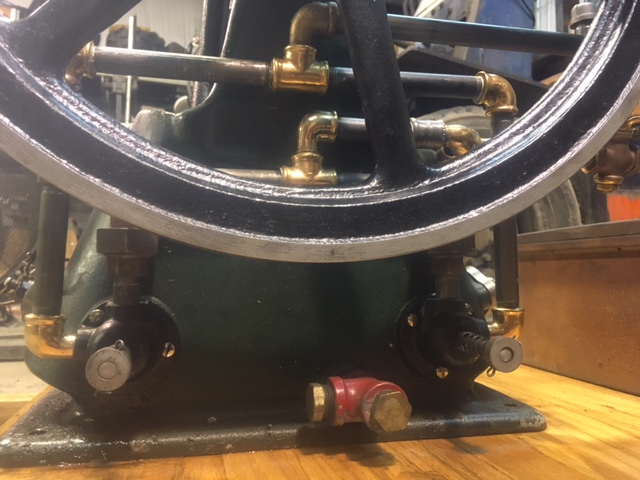
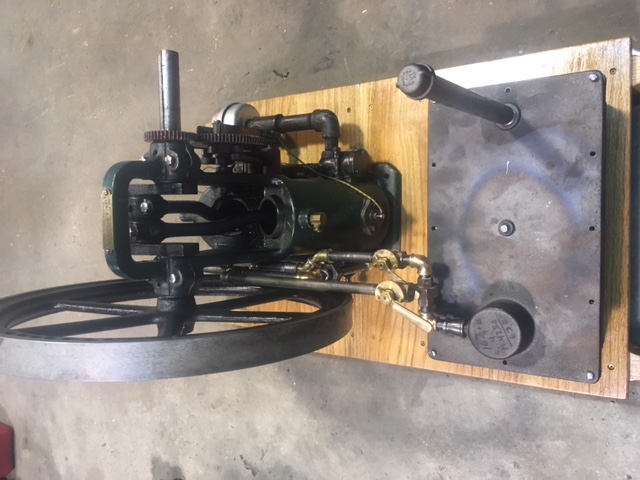 |
    
jb_castagnos
Senior Member
Username: jb_castagnos
Post Number: 1432
Registered: 07-2002

| | Posted on Monday, August 12, 2019 - 10:35 pm: | 




|
last picture
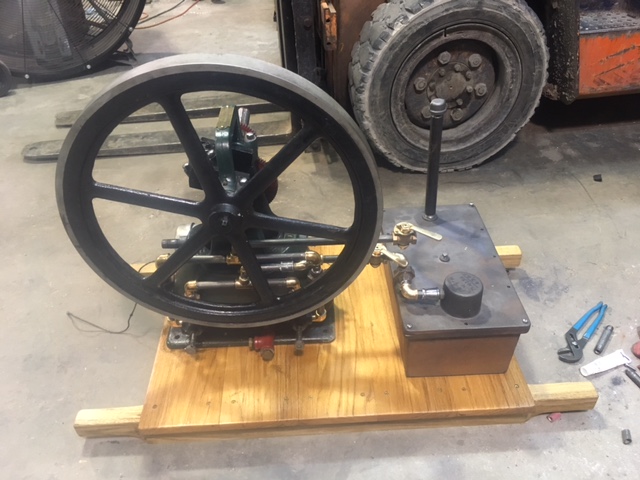 |
    
richarddurgee
Senior Member
Username: richarddurgee
Post Number: 4145
Registered: 11-2001
| | Posted on Tuesday, August 13, 2019 - 06:55 am: | 




|
*
jb I first met you at the Calvert Marine Museum show many years ago, I recall you working on an old marine engine on a trailer getting the valve timing and ignition ready to run but there was no carburetor only an opening in the lower crankcase. you took a small pan filled it with gasoline and soaked a rag in it and had Bob Price hold it under the intake port-- Lo and behold The engine started much to the awe of all there--- that was my first introduction to "Surface Carburetion " The one in the photos above is much more sophisticated same principle ! Great Stuff !!
* |
    
jb_castagnos
Senior Member
Username: jb_castagnos
Post Number: 1433
Registered: 07-2002

| | Posted on Wednesday, August 14, 2019 - 06:43 pm: | 




|
I remember that Richard, it was Keith's Fisherman, he brought it down to let me look at it, my engine was still being resurrected. Made a lot of good friends at that show, still close today. |


